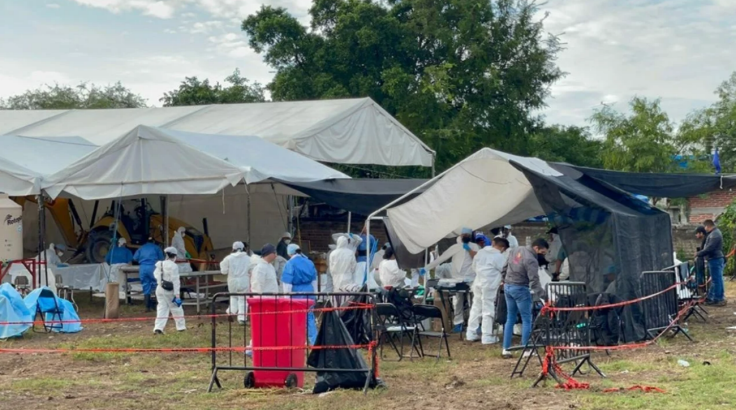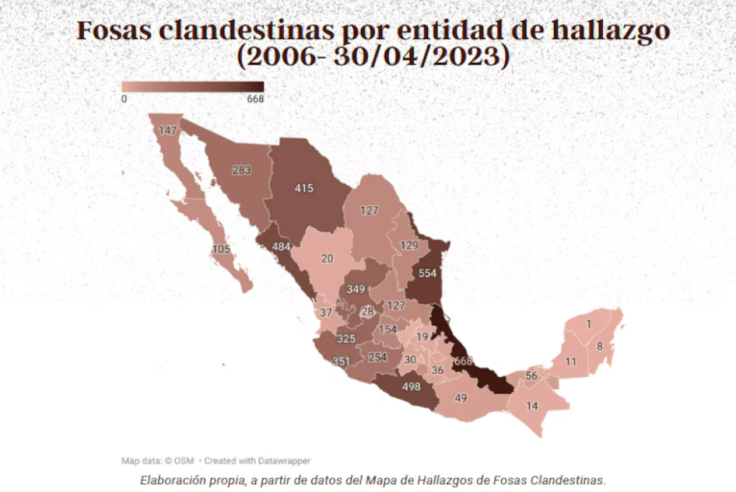
For nearly a decade, families in Jojutla, a town in the central state of Morelos, Mexico, have pushed for answers about the clandestine graves first discovered at the Pedro Amaro municipal cemetery in 2017.
Since the initial discovery, which was made by search groups, the Morelos Attorney General's Office has carried out four exhumation efforts, uncovering dozens of human remains. But relatives of the victims and volunteer search groups say the process has been marred by irregularities.
The first graves were found in 2017 by groups such as Desaparecidos Tetelcingo y Jojutla, which discovered that authorities had used the cemetery to bury unidentified bodies illegally between 2007 and 2014. Investigators later confirmed that at least 87 bodies were buried without identification or notification of their families, in violation of forensic and human rights protocols.
In the most recent exhumation on June 22 authorities and volunteers uncovered 60 additional bodies, including at least 10 infants, more than 10 women, and a dozen sets of bone fragments.
Despite the findings, volunteers say the true number of victims is being underreported. They also allege multiple violations of forensic standards.
"As of now, there are more than 60 bodies, including 10 to 12 infants," said Amalia Alejandra Hernández Hernández, a member of Desaparecidos Tetelcingo y Jojutla and relative of one of the victims, in an interview with Proceso.
Hernández pointed to a lack of consistency in how remains were classified. "For example, a complete baby was recorded as 'scattered bone,' which affects the actual count," she said.
Volunteers also noted that some packages collected by authorities contained more than one body. Additionally, they said the National Guard, whose presence is essential for handling genetic samples, was absent for at least two days.
"Without them, we can't decide which sample to take," Hernández said.
One of the most serious concerns raised by the groups is the lack of a physical anthropologist at the site. The only specialist provided by the National Commission for Victim Assistance (CEAV) ended her participation earlier this month. Since then, a social anthropologist has overseen the work — raising concerns about the ability to differentiate between human and animal remains.
"There have already been several irregularities," said Hernández. "And I say this based on the prosecutor's own 2025 exhumation guidelines. In 2024, they followed certain criteria, and now those have changed, but they're not even following the new ones."
The Mexican government has stopped tracking clandestine graves
According to a report published earlier this year by El País, the Mexican government has largely stopped tracking clandestine graves across the country. According to the outlet, the last official update came in 2023, when 5,698 clandestine graves had been identified between 2006 and 2023.

In Tamaulipas, for example, members of the group Colectivo Amor por los Desaparecidos have identified more than 20 suspected sites so far this year in Reynosa, where criminal groups allegedly killed and incinerated their victims.
Amid the growing controversy surrounding the Izaguirre Ranch case in Teuchitlán, Jalisco, the federal government quietly disabled public access to the website that had tracked the locations of clandestine graves nationwide.
The now-inaccessible records showed that from Dec. 1, 2018, to April 30, 2023, a total of 2,863 sites were discovered. According to data collected by the Interior Ministry and cited by Infobae México, only Veracruz (668) reported more such graves than Tamaulipas (554) and Sinaloa (484).
© 2025 Latin Times. All rights reserved. Do not reproduce without permission.







